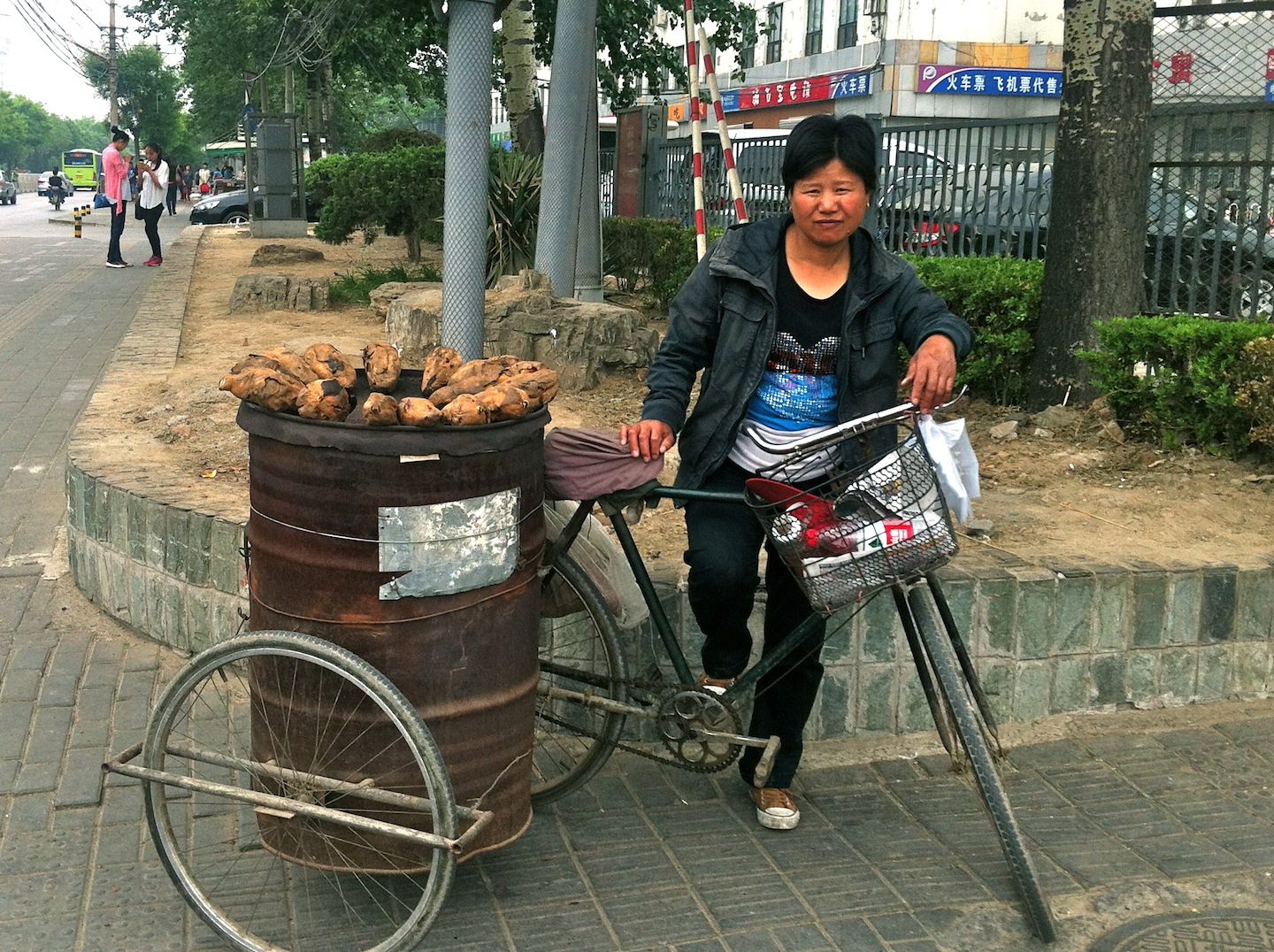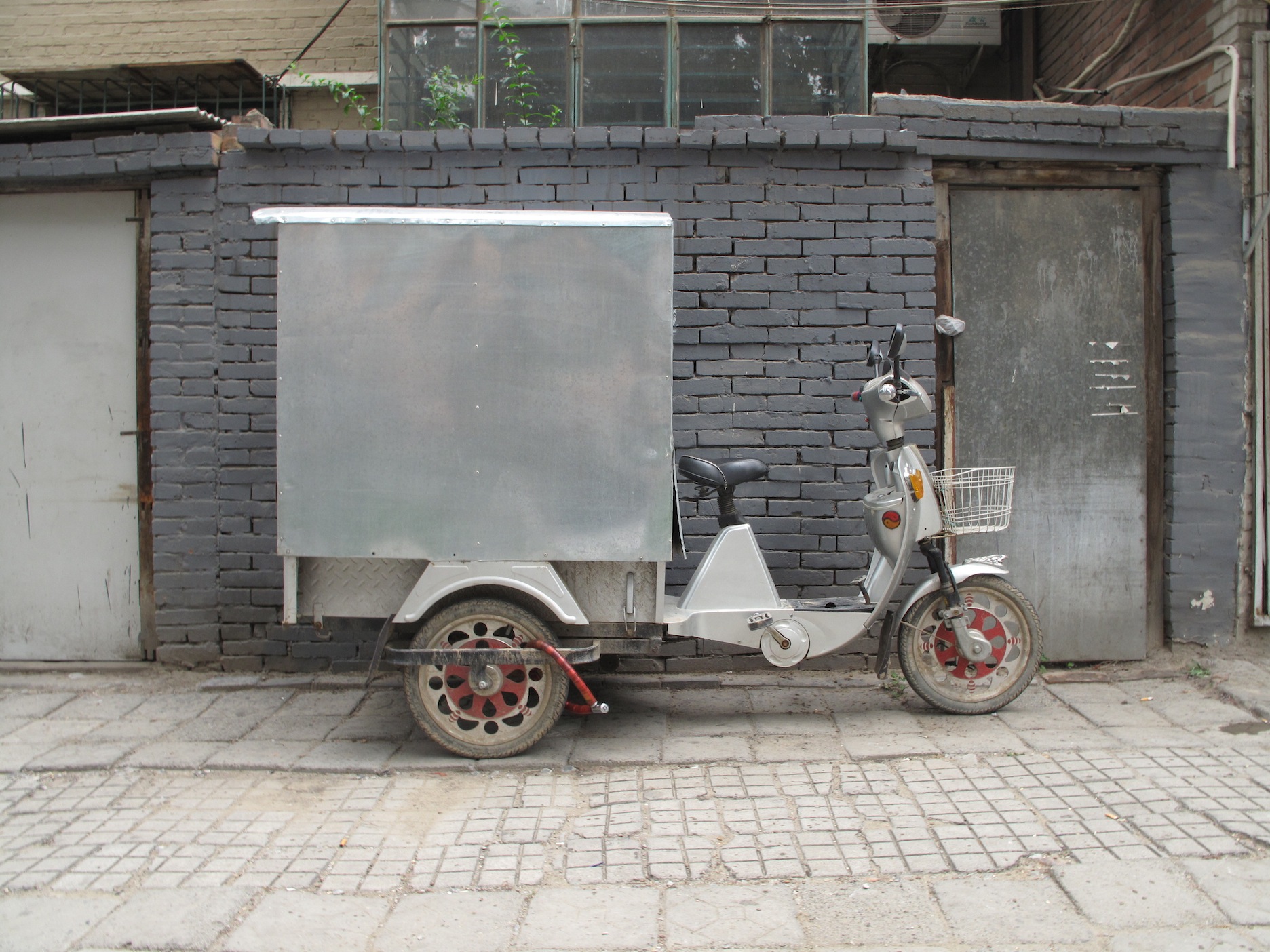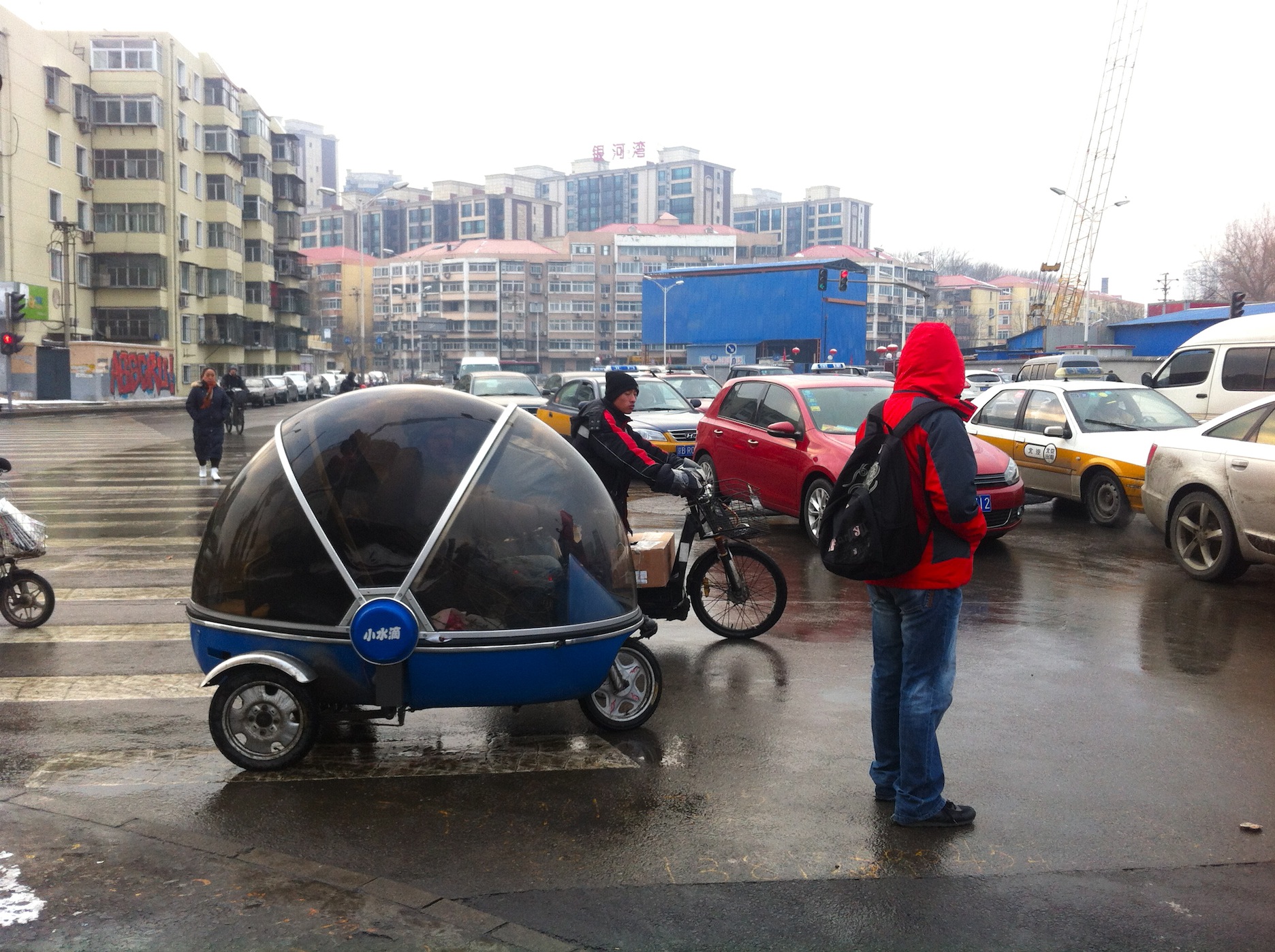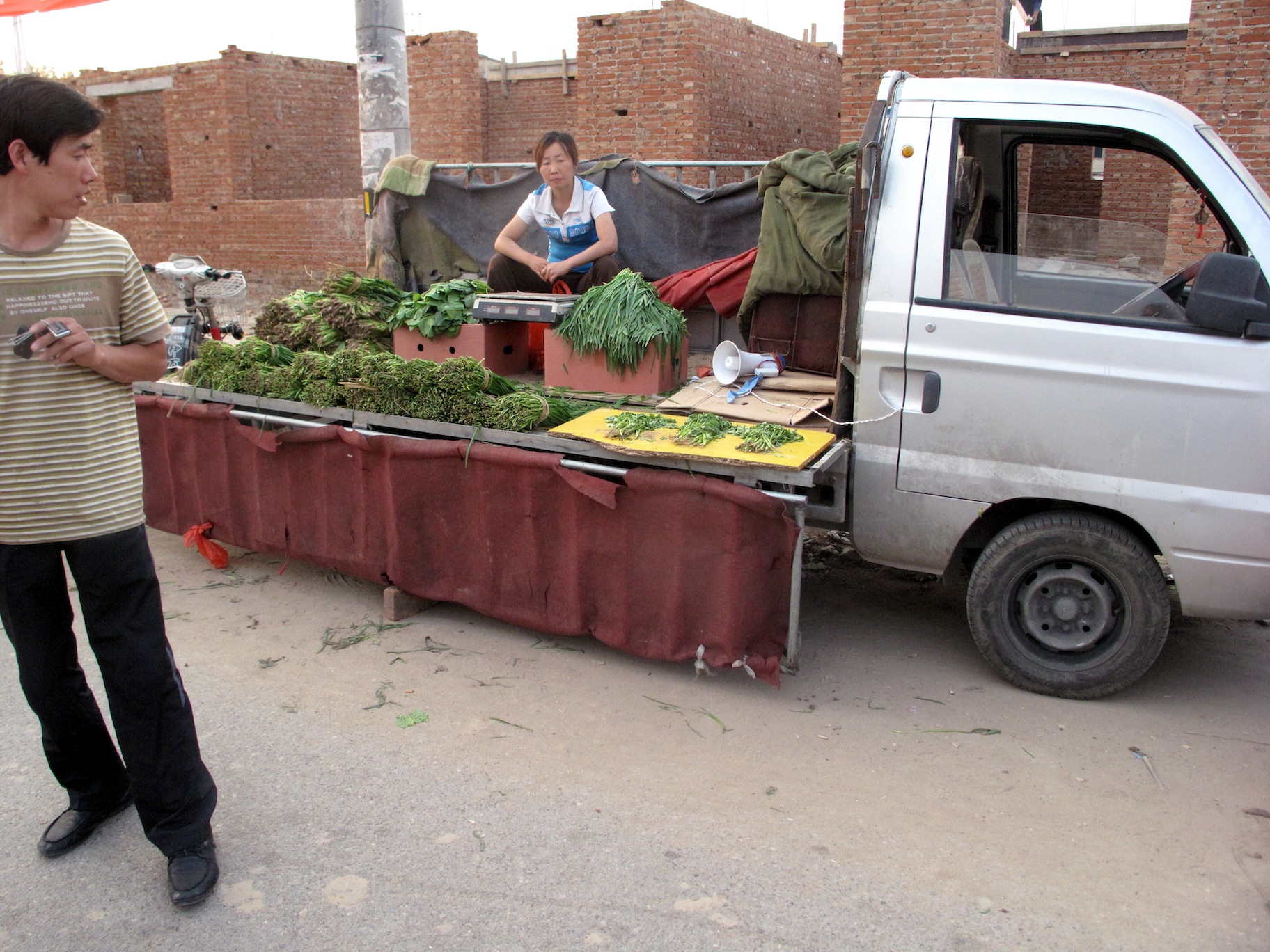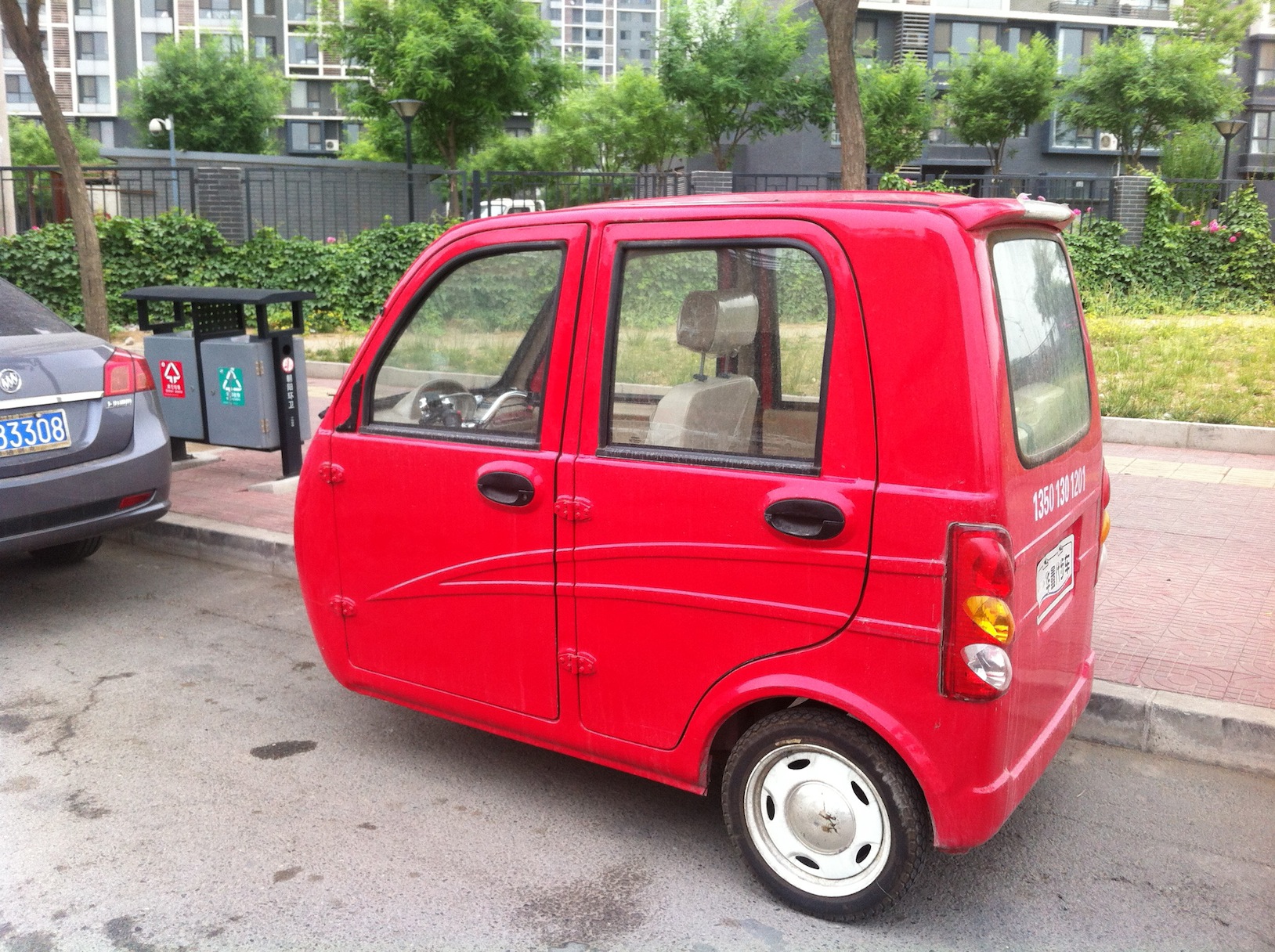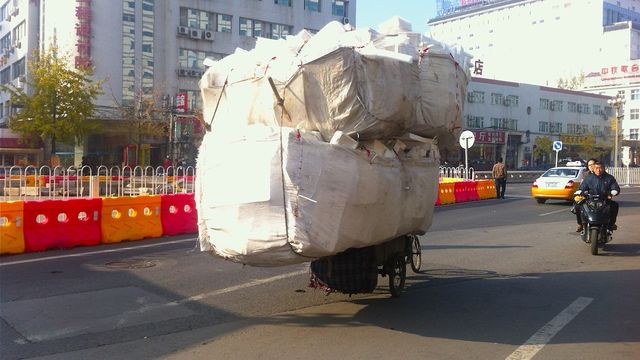
Beijing Transports
The rickshaw, a two-wheeled human drawn passenger cart, appeared in China in the mid to late 1800s. Their popularity began to decline in the 1920s and by 1950 and the founding of the PRC most manual rickshaws were gone, perhaps in part because they had become a symbol of oppression of the working class. But the two and three-wheeled cycle and other animal and motor drawn vehicles are still in use today.
Until recent times, bicycles were the dominant form of transportation and moved through cities like huge schools of fish. Ever since I moved to Beijing in 2008 I have witnessed an ever-growing population of cars and highways. But in the midst of this new society surging into the future one can still find remnants of the past. It is not uncommon to see a horse pulled wagon hauling loads of bricks or mounds of coconuts down a major thoroughfare with Audis whizzing by and bicycles and pedestrians filling in every other gap on the street.
Carts of all types and sizes are an integral part of the daily life of the city providing short distance passenger transportation and every other type of personal and industrial hauling imaginable. The recyclers and pickers are out in force every day and night looking for material to recycle and sell. They are amazingly adept at piling and balancing mountains of materials that almost completely dwarf their spindly carts. These workers come in handy when you buy or find something that is too big or heavy to be carried, there is always one around to help you home, at a very reasonable price. --James Elaine



